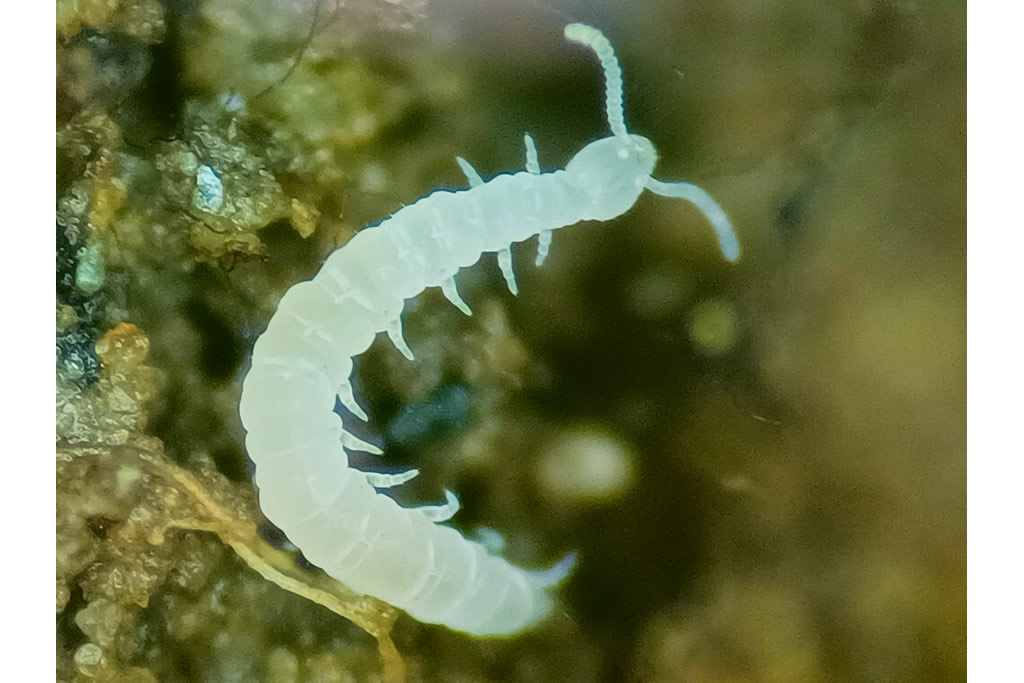Scolopendrellopsis subnuda (Hansen, 1903)
Synonyms
Symphyllelopsis subnuda (Hansen, 1903)
Status:
Quite common
ID Difficulty
Identification
Currently just two species of Scolopendrellopsis are known to occur in Britain or Ireland. These were formerly placed in the genus Symphyllelopsis (e.g. in the key by Edwards, 1959).
The genus is recognised by having 21 or 22 poorly defined dorsal scuta, the first relatively well-developed. The cerci are short with long conical terminal area. [Other genera in family Scolopendrellidae have just 17 dorsal scuta, the first represented only by setae; cerci long with small expanded terminal area].
Scolopendrellopsis subnuda is a small species some 1.2. to 2.0 mm in length. The third pair of legs corresponds with a single dorsal scutum. The posterior projections of scuta are narrow and considerably further apart than their length. The first scutum is relatively short compared to that of S. arvernorum.
Distribution and Habitat
It is probably quite common but can be easily overlooked because of its minute size.
This is very slow moving species found within soil, typically at low densities (compared to other Symphylans).
References
Andersson, G., Meidell, B.A., Scheller, U., Winqvist, J.-Å., Osterkamp Madsen, M., Djursvoll, P., Budd, G. & Gärdenfors, U. (2005). Nationalnyckeln till Sveriges flora och fauna. Mångfotingar. Myriapoda. (CF). Uppsala: ArtDatabanken, SLU. [text in Swedish]
Edwards, C.A. (1959). A revision of the British Symphyla. Proceedings of the Zoological Society of London 132: 403-439.
Hopkin, S.P. & Roberts, A.W. (1988). Symphyla – the least studied of the most interesting soil animals. Bulletin of the British Myriapod Group 5: 28-34.
Links
MilliBase - Global catalogue of Symphylans: https://millibase.org/aphia.php?p=taxdetails&id=1006408




